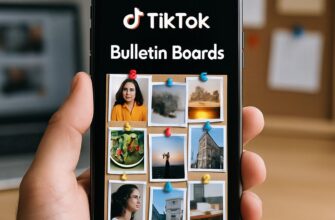People no longer open a browser when they want an answer — they open an app. Social media platforms as search engines: optimizing content for discoverability on TikTok & Instagram means thinking like a librarian and a performer at once. You must serve intent with clarity and catch attention in the first beat; that blend is the new search optimization.
- Why social platforms act like search engines
- How TikTok’s search and recommendations work
- How Instagram’s discovery system differs
- Concrete optimizations: keywords, captions, and hooks
- Hashtags, alt text, sounds, and other technical levers
- Quick comparison: signals that matter
- Format strategy: Reels, short video, carousels, and Guides
- Engagement signals and ranking — what to nudge for
- Testing, analytics, and iteration
- A small real-world example
- Practical 10-point checklist
Why social platforms act like search engines
Search behavior has migrated. Users today ask cooking questions, DIY fixes, product recommendations, and local tips directly inside apps where content and community live. That shift turned feeds into living, browsable libraries where discovery happens through queries, trends, and related recommendations.
Unlike classic web search, social discovery pairs explicit queries with passive signals: a user types a phrase or taps through a trend, and the platform interprets those actions along with past behavior. That means discoverability depends both on keyword relevance and on the content’s ability to engage and keep people watching or clicking.
For creators and brands, the practical implication is simple: don’t optimize only for keywords; optimize for immediate usefulness and for the micro-engagements the platform rewards. Answer fast, show value, and respect the mechanics each app uses to surface content.
How TikTok’s search and recommendations work
TikTok pairs a traditional search box with an algorithm that heavily weights watch behavior, completion rates, replays, and shares. Keywords in captions and on-screen text help the system understand content, but the strongest signal is whether viewers stick around and interact.
Sounds are another unique vector on TikTok. Using a trending audio clip can route your video into existing discovery paths because the app groups content by audio cluster. That’s why creators often remix a popular sound while adding a distinct visual hook.
In practice, that means every element matters: first two seconds, readable text overlays, descriptive captions, and a sound choice that’s relevant. If you make content that the algorithm predicts people will engage with, TikTok will test it to broader audiences and, if it performs, scale it fast.
How Instagram’s discovery system differs
Instagram’s Explore page and Reels surface content through a mix of explicit keyword matching, interest graphs, and social proximity. Hashtags and alt text help the platform categorize posts, but relationships — who you follow and interact with — still shape how widely something spreads.
Reels lean toward short, entertaining clips and often mirror TikTok behavior, but Instagram also rewards high-quality thumbnails and captions that invite a comment or save. Carousels and Guides perform differently; they’re discovery-friendly when they deliver clear, step-by-step value that users want to return to or bookmark.
Because Instagram blends algorithmic recommendations with stronger social signals, it’s often slower to scale a new creator purely on engagement. But when content aligns with both topical keywords and visual polish, it can enjoy steady reach across Explore, Reels, and hashtag searches.
Concrete optimizations: keywords, captions, and hooks
Start with intent mapping: list search phrases your audience uses in natural language — the questions they type or voice. Then write short captions that include one clear phrase of intent near the beginning, and make sure your on-screen text mirrors that phrase so the platform’s OCR can read it.
Front-load the hook. The first 1–3 seconds of a video determine whether people keep watching, and hooks can be visual, verbal, or both. For Instagram stills or carousels, an arresting first image and a concise title are the equivalent of a hook.
Use captions to expand on the value quickly and to add keywords that might not appear in the spoken audio. Don’t cram keywords unnaturally — say the same thing a user would ask — but do ensure the words the audience uses appear in some form in text, audio, or metadata.
Hashtags, alt text, sounds, and other technical levers
Hashtags are shorthand categories. On Instagram they’re important for topical discovery; on TikTok they help but are less determinative than engagement. Choose a mix of broad and specific tags and avoid stuffing unrelated tags for the illusion of reach.
Alt text and image descriptions matter more than most creators assume. They signal content to the platform’s understanding systems and slightly improve accessibility, which indirectly helps discoverability. On Instagram, set alt text that’s descriptive and includes the primary topic keyword in natural language.
Sounds and audio metadata are a competitive advantage on TikTok. If your audio becomes memorable, other creators will reuse it and your clip becomes part of a discoverable audio graph. When possible, add a brief spoken line that contains your main phrase — it helps both viewers and the algorithm.
Quick comparison: signals that matter
| Signal | TikTok | |
|---|---|---|
| Watch time | High weight | Important for Reels |
| Hashtags | Useful, lower weight | High weight for Explore |
| Audio | Crucial (audio clusters) | Growing importance for Reels |
| Alt text & captions | OCR & captions help | Alt text strongly helpful |
Format strategy: Reels, short video, carousels, and Guides
Match format to intent. Reels and TikTok-style clips work best for quick tutorials, product demos, and entertaining answers. Carousels are ideal for step-by-step guides and longer informational sequences that users want to save.
Guides and saved Collections on Instagram are great when your goal is evergreen discoverability for how-to content. They provide multiple entry points: people can land on a single Reel, then move to a carousel or Guide that deepens the answer and signals sustained value to the platform.
Engagement signals and ranking — what to nudge for
Platforms watch micro-engagements: watch-to-end, replays, shares, comments, and saves. If your piece prompts a reaction — a laugh, a share, a saved checklist — it gains more weight than passive likes alone. Design content to encourage one simple action that aligns with discovery goals.
Calls to action should be specific and low-friction: “Save this for later,” “Share with someone who needs this,” or “Try step one and reply.” Resist generic “like and follow” asks; meaningful, content-related actions carry more ranking benefit and create real user value.
Testing, analytics, and iteration

Run short experiments: tweak the hook, swap the thumbnail, or change a caption and compare impressions and watch time. Both TikTok and Instagram provide native insights that reveal which audiences engage and which parts of the video drop off, allowing targeted improvements.
Keep an insights log. Track variables like sound choice, hashtag set, caption length, and upload time. Patterns emerge quickly: certain tags might work only when paired with a particular hook, and certain audiences will replay specific formats more often.
A small real-world example

I worked with a local bakery that wanted to be found for “best sourdough starter tips” without a big ad budget. We turned one 45-second recipe clip into a short series: a 15-second hook video, a 60-second deep-dive, and a carousel with measurements. Each asset used the same core phrase in slightly different words.
The result wasn’t magic, it was layering: the short clip got quick reach on TikTok because people rewatched the technique, the longer video earned saves on Instagram, and the carousel captured searches for exact measurements. That alignment made the bakery discoverable across search behaviors it hadn’t tapped before.
Practical 10-point checklist
- Map audience questions and prioritize natural-language phrases.
- Open with a strong visual or verbal hook in the first 1–3 seconds.
- Use readable on-screen text that mirrors search phrases.
- Include one clear keyword phrase in the caption without stuffing.
- Pick a relevant sound on TikTok and test a trending audio when appropriate.
- Mix broad and niche hashtags; avoid irrelevant tags.
- Write descriptive alt text for images on Instagram.
- Prompt one meaningful micro-action: save, share, or comment.
- Run A/B tests on thumbnails, hooks, and captions for one week each.
- Log results and iterate — discovery compounds when signals align.
Discoverability today is a blend of clear relevance and emotional or practical value. When you treat social posts as answers rather than ads, they perform better in search-like contexts and build lasting visibility. The technical levers — keywords, alt text, hashtags — matter, but they only unlock reach when the creative itself earns attention.
If you want more deep-dive guides and tactical checklists, visit https://news-ads.com/ and read other materials from our website.







